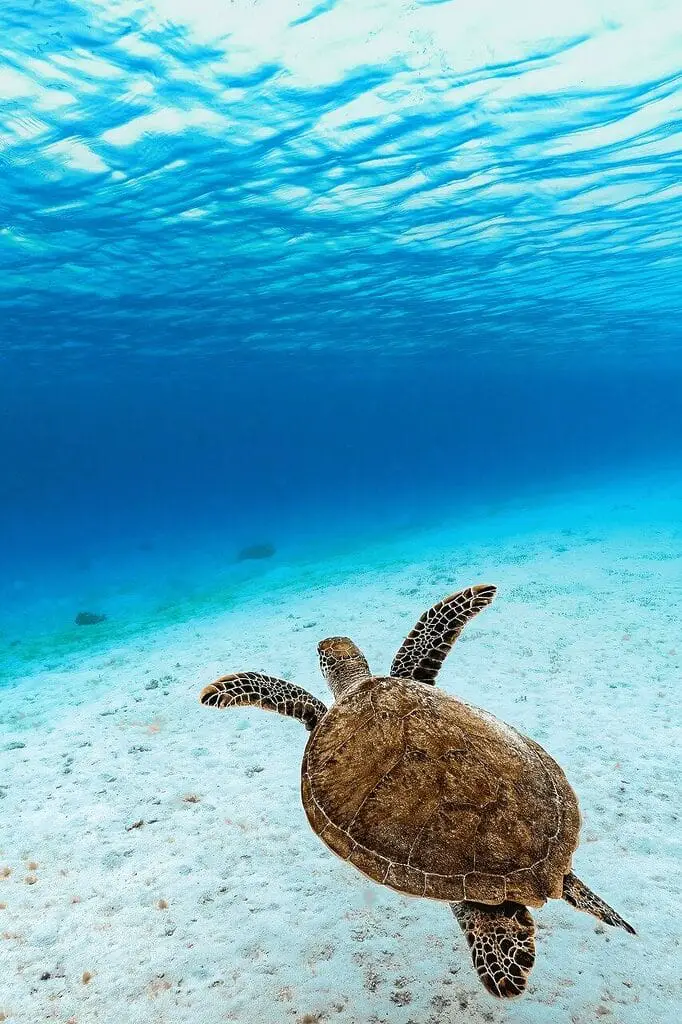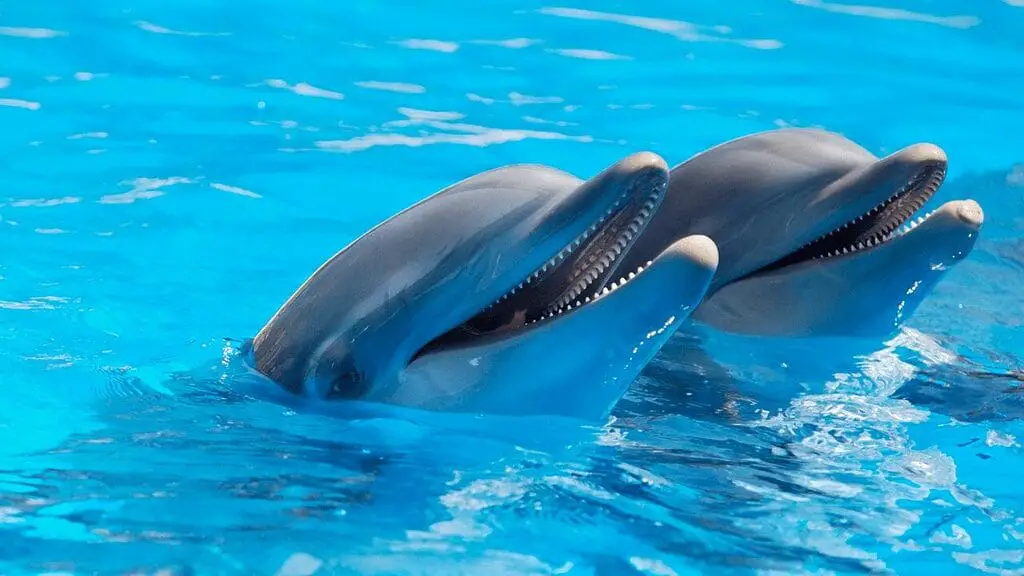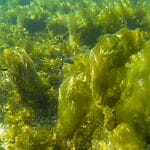Embarking on the exploration of saltwater ecosystems unveils a realm teeming with biodiversity and ecological wonders. Vast oceans, brimming with marine life, present a rich tapestry of interconnected ecosystems. However, this fragile balance faces unprecedented challenges, including climate change, overfishing, and pollution, threatening the very fabric of marine biodiversity.
Yet, amidst these challenges lie opportunities for conservation, sustainable resource management, and scientific innovation. Understanding and preserving saltwater ecosystems not only safeguards diverse marine species but also holds the key to discovering novel solutions for global challenges.
The exploration of these aquatic realms beckons a call to action, emphasizing the delicate harmony between humanity and the vast, enigmatic oceans.
The Magnificent Seven: Animals Thriving in Saltwater
1 – The Resilient Coral Polyps
Coral polyps and algae engage in a vital symbiotic dance within coral reefs. The polyps provide shelter and a protective environment for algae, while the algae produce oxygen and vital nutrients for the coral through photosynthesis. This mutualistic relationship, known as coral mutualism, not only sustains the vibrant colors of coral but also fuels the growth of entire reef ecosystems.
Coral reefs, often called the “rainforests of the sea,” harbor unparalleled biodiversity, serving as crucial habitats for countless marine species. Their intricate structure supports the food chain, protects coastlines, and plays a pivotal role in maintaining the health of the world’s oceans.
2 – The Colorful Clownfish
Clownfish, famed for their vibrant colors, exhibit unique behaviors and adaptations. Their mucus layer makes them immune to the stinging tentacles of sea anemones, forming a remarkable symbiotic relationship. Seeking refuge among anemones, clownfish gain protection from predators, while the anemone benefits from its leftovers and deters potential threats.
Striking communication within clownfish groups helps establish hierarchy and maintain social order. In an extraordinary survival tactic, when the dominant female dies, the largest male undergoes a sex change to assume the female role. These fascinating adaptations showcase the intricate interdependence of clownfish within their environment, demonstrating nature’s evolutionary brilliance.
3 – The Majestic Sea Turtles

Sea turtles, renowned migrators, navigate vast ocean expanses to return to their birthplaces for nesting. Females, driven by instinct, lay eggs in sandy beaches, undertaking perilous journeys to nesting sites. However, these ancient mariners face threats from habitat loss, pollution, and poaching, rendering them endangered.
Global conservation efforts strive to protect sea turtles, employing measures like beach protection, community awareness, and stricter anti-poaching laws. Innovative technologies such as satellite tracking aid in monitoring migratory patterns, guiding conservationists. By addressing human-induced challenges, these initiatives aim to secure the survival of these majestic creatures and sustain the delicate balance of marine ecosystems.
4 – The Graceful Dolphins

Dolphins, renowned for their high intelligence, exhibit complex social behaviors. Living in intricate pods, they display communication through clicks and whistles, forming strong social bonds. Their problem-solving abilities and capacity for learning make them exceptional creatures. Dolphins play a crucial role in marine ecosystems by controlling fish populations and contributing to ecological balance.
Furthermore, their interactive and friendly demeanor has led to close connections with humans, fostering interest in marine conservation. However, human activities like pollution and fishing pose threats to these intelligent beings. Understanding and protecting dolphins not only preserves their unique social structures but also sustains the health of the oceans they inhabit.
5 – The Elusive Seahorses
Seahorses boast peculiar anatomical features, with a horselike head, prehensile tail, and distinctive lack of scales. Remarkably, the males bear the burden of pregnancy. Females deposit eggs into a specialized pouch on the male’s abdomen, where they are fertilized and nurtured until birth.
Despite their intriguing adaptations, seahorses face challenges in saltwater habitats, including habitat destruction, pollution, and overexploitation for traditional medicine and curios. Their slow swimming speed and reliance on seagrasses for camouflage make them vulnerable to environmental changes. Conservation efforts are crucial to preserving these enigmatic creatures and maintaining the delicate balance of marine ecosystems.
6 – The Otherworldly Jellyfish
Jellyfish, a diverse group with over 2,000 species, exhibit extraordinary adaptations. Their gelatinous bodies and pulsating bell structure enable graceful movement through water. Some possess bioluminescence, while others have intricate tentacles armed with stinging cells for prey capture. Despite their ecological roles as both predator and prey, jellyfish blooms—massive population explosions—have profound impacts.
Blooms disrupt marine food webs by outcompeting other species for resources, causing fishery declines and altering nutrient cycling. Climate change and human activities contribute to the surge in jellyfish populations, emphasizing the need for sustainable marine practices to mitigate the ecological repercussions of these mesmerizing yet disruptive creatures.
7 – The Mystical Giant Squid
Giant squids, inhabitants of the deep sea’s abyssal depths, reside up to 3,300 feet below the surface. Their elusive nature stems from the inaccessibility of their habitat, making them challenging to study. These colossal cephalopods, with eyes the size of basketballs, possess bioluminescent capabilities for camouflage and communication.
Despite their mysterious existence, giant squids have contributed significantly to marine science. Their discovery and analysis of remains in the stomachs of sperm whales have enhanced our understanding of deep-sea ecosystems. Unraveling the secrets of these enigmatic creatures remains a frontier in marine biology, pushing the boundaries of exploration and discovery.
The Significance of Saltwater Environments
Ecosystem Services Provided by Saltwater Habitats

Oceans and seas offer indispensable ecological services vital to the health of the planet. Phytoplankton, which are microscopic marine plants, generate over half of Earth’s oxygen through photosynthesis. Additionally, oceans act as a vast carbon sink, absorbing significant amounts of carbon dioxide to regulate climate. Coastal ecosystems, like mangroves and coral reefs, provide essential breeding and nursery grounds for countless marine species.
The interconnectedness of marine life is pivotal; the migratory patterns of marine animals connect distant ecosystems, influencing nutrient cycles and population dynamics. Oceans support human livelihoods, serving as a crucial source of food, employment, and transportation. The delicate balance within marine ecosystems influences weather patterns and regulates temperature, impacting global climate systems. Recognizing the intricate web of life in oceans emphasizes the urgency of sustainable practices. Preserving the health of oceans is not only essential for marine life but also for the overall stability and well-being of our planet.









